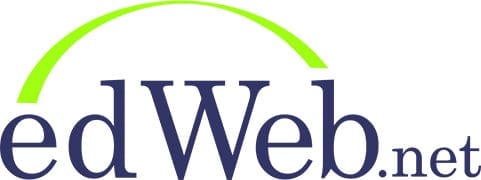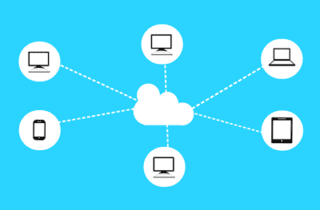While the Individuals with Disabilities Education Act (IDEA) was last reauthorized in 2004, with amendments in 2015, and the Web Content Accessibility Guidelines (WCAG) were updated back in 2008, the demand for accessibility and equality in education continues to grow. Administrators and teachers, who want to help every child reach their potential, can’t afford to wait for new laws and policies. Educators still need to constantly evaluate the effectiveness of accessibility initiatives, advocate for resources for their students, and anticipate where they need to go next. During the edWebinar “Accessibility: Effective, Equitable Learning Environments for All Students,” which is part of a series hosted by CoSN and edWeb.net, the presenters discussed how they approach CoSN’s five steps to ensure accessibility.
Even in today’s tech-heavy environment, before moving to online assessments, leadership needs to ask: Should we? According to Glenn Robbins, Superintendent of Tabernacle Township School District, NJ, and Dr. Donna Wright, Director of Schools, Wilson County Schools, TN, too often the focus is on why everyone else is doing it or the idea that everything needs to be done on a computer. During their presentation, ”Online Assessment: An Evolving Landscape and New Opportunities,” they discussed the lessons they learned when they made the transition and what they would change if they could.
Teachers have many edtech resources in their toolbox now. The question is, are the teachers within a school, grade, or subject area accessing the same toolbox? More important, are the tools of equal quality? During the edWebinar, “Transform Learning: Track Results for Chromebooks, Google Suite, and Every Application,” presenters Kyle Berger, Chief Technology Officer at Grapevine-Colleyville ISD, TX, and Matthew X. Joseph, Ed.D., Director of Digital Learning and Innovation at Milford Public Schools, MA, talked about why they wrangled their technology and how having a defined edtech toolbox improved teaching and learning overall.
This edWebinar, will how SEL has become an integral part of the developmental success of students in the Round Rock Independent School District.
Step 1: Make a plan. That’s the first piece of advice for every superintendent and school leader who asks about creating 1:1 environments in their schools. During an edWebinar for the Empowered Superintendent series, “Leadership for Mobile Learning: Creating a Shared Vision,” the presenters said school leaders, though, often miss key parts of the planning process and end up with useless “hunks of plastic.” The speakers, led by Ann McMullan, Project Director for the CoSN Empowered Superintendents Program, shared their essential elements for a successful 1:1 plan as well as the steps they wish they could redo.
At the beginning of the edtech wave, superintendents saw many benefits from using digital resources in the classroom. But, they also saw a large number of resources being recommitted to just this one aspect of education: space for server farms, money for hardware and software upgrades, overworked personnel, etc. District IT offices were taking on the same tasks as Fortune 500 companies without the ability to implement them as effectively. For administrators looking to take the focus of edtech away from upkeep and back to learning, moving to the cloud could be the answer. Presenters of the edWebinar, “Cloud Computing: Taking Advantage of the Latest Technologies,” which is part of the Empowered Superintendents edWebinar series, shared their reasons for switching to the cloud, how it has helped their schools, and their advice when making the transition.
In a recent edWebinar hosted by edWeb.net, Amy Filsinger, Head of School Success, Mike Rettberg, Professional Services Lead, and Chris Walsh, Head of Impact from Always Be Learning (Abl) agreed that student-centered scheduling ensures that ALL students get the classes they want and need. You can almost be guaranteed to see a large magnet board with its color-coded magnets in most school buildings. Filsinger stresses that “every year, there is roughly $10 million dollars being managed on a magnet board with post it notes, and expo markers.”
When Congress passed FERPA (The Family Educational Rights and Privacy Act) in 1974, school and district leaders could rely on once-a-year training and reviews to make sure they remained in compliance. Now, when educators could potentially add a new app with a few mouse clicks, managing student data privacy is a never-ending task. In the edWebinar “Student Data Privacy: A Priority and Essential Commitment,” presenters Dr. Charles Dumais, Superintendent and Executive Director, Cooperative Educational Services, Trumbull, CT; Dr. Quinn Kellis, Superintendent Dysart Unified School District, Surprise, AZ; and Linnette Attai, Project Director, CoSN Privacy Initiative and Trusted Learning Environment Program, explained CoSN’s Protecting Privacy in Connected Learning initiative and superintendents’ essential role in directing their districts’ efforts. Discussing CoSN’s Five Critical Guidelines for Ensuring Data Privacy in Your Use of Technology, the speakers told attendees that when it comes to data privacy, the word “done” isn’t in their vocabulary.
Mention edtech, and the first thought that usually comes to mind is collecting data to evaluate students’ progress. And during the recent webinar “Get Smart with EdTech: Track Usage on Every Device,” presenters Jeremy Bunkley, Director of Information Technology Services, School District of Clay County, FL, and Leo Brehm, Product Manager, CatchOn, acknowledged that one goal of edtech is to provide educators with data so that they can develop a more effective and personalized learning plan for each student. They also said, though, that with the silos of information that still exist in many schools and districts, one of the most important pieces of data to collect is to find out what edtech resources are actually being used in your classroom. By asking three key questions, leaders can get a better sense of their K-12 edtech ecosystem.
“If it’s edtech, it must be good,” used to be the mantra in schools. In fact, many school technology plans fluctuated depending upon the latest fads and what someone learned at a conference and had little connection to curriculum or learning goals. Now, recognizing the disconnect between school and district leaders, the realities of the technology infrastructure, and classroom needs, CoSN and AASA have created the Empowered Superintendent initiative, which is dedicated to helping superintendents, aspiring superintendents and district leadership teams build their knowledge, skills and confidence as technology leaders. During “The Empowered Superintendent: Leading Digital Transformation,” the first in a new edWebinar series, Dr. David Schuler, Superintendent, Township High School District 214 (IL), and Dr. Chris Gaines, Superintendent, Mehlville School District (MO), along with host Ann McMullan, Project Director, CoSN Empowered Superintendents Program, discussed the goals of the program. Overall, they implored listeners to move away from using “tech for tech’s sake” and to become intentional adopters of technology that enhances teaching and learning.











